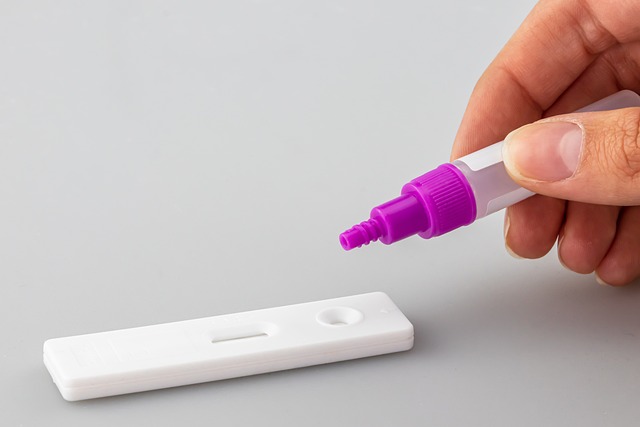Overview of the Medical Assistant Profession for English Speakers in the U.S.
In the United States, the role of a Medical Assistant plays an essential part in supporting healthcare professionals and improving patient care. This growing field values reliability and communication skills, often welcoming individuals from diverse backgrounds. Educational and training programs—both in-person and online—provide opportunities to develop the practical knowledge needed to succeed in this profession.

Medical assistants represent one of the fastest-growing occupations in the American healthcare system. These professionals work in various medical settings, including hospitals, clinics, and private practices, serving as the connective tissue between patients, physicians, and administrative staff. For English speakers in the United States, this career path offers accessibility, stability, and the opportunity to make a meaningful difference in patient care without requiring extensive years of medical education.
Understanding the Role of a Medical Assistant in Healthcare Settings
Medical assistants perform a unique dual role that encompasses both clinical and administrative responsibilities. On the clinical side, they may take vital signs, prepare patients for examinations, assist physicians during procedures, administer medications under supervision, perform basic laboratory tests, and provide patient education. The administrative aspects include scheduling appointments, managing medical records, handling insurance forms, coding and billing, and maintaining office inventory.
The scope of practice for medical assistants varies by state, with some jurisdictions allowing them to perform more advanced procedures under physician supervision. In states like California, Washington, and Arizona, certified medical assistants may be permitted to administer certain medications or perform specific diagnostic tests, while other states maintain stricter limitations on their clinical activities.
Medical assistants typically work in team-based environments where clear communication is essential. Their position at the intersection of clinical and administrative functions makes them valuable coordinators within healthcare settings, often serving as the first point of contact for patients and facilitating smooth operations throughout the facility.
The Importance of Reliable Individuals in the Medical Field
The medical assistant profession demands individuals with strong ethical foundations and reliability. Healthcare facilities depend on medical assistants to maintain confidentiality, demonstrate compassion, and perform consistently under pressure. Patient safety and comfort frequently rest in their hands, making personal integrity and attention to detail non-negotiable qualities.
Medical assistants must demonstrate cultural sensitivity and effective communication skills, particularly important in diverse healthcare environments. The ability to interact professionally with patients from various backgrounds while maintaining composure during stressful situations distinguishes exceptional medical assistants from average ones.
The profession also requires adaptability as healthcare technologies and protocols evolve. Medical assistants must stay current with electronic health record systems, telehealth platforms, and changing compliance requirements. Their willingness to continuously learn and adjust to new procedures directly impacts the quality of patient care and operational efficiency of medical practices.
Professional organizations like the American Association of Medical Assistants (AAMA) and the National Healthcareer Association (NHA) emphasize the importance of professional development and ethical conduct through their certification programs and continuing education requirements, reinforcing the critical nature of reliability in this field.
Training Options for Aspiring Medical Assistants in the United States
Prospective medical assistants in the U.S. can pursue several educational pathways. Certificate or diploma programs typically take 9-12 months to complete and focus exclusively on medical assisting skills. Associate degree programs, usually requiring two years, provide broader education including general studies alongside medical assistant training. Both options include classroom instruction, laboratory practice, and often culminate with an externship in a healthcare setting.
Accreditation matters significantly when choosing a program. The Commission on Accreditation of Allied Health Education Programs (CAAHEP) and the Accrediting Bureau of Health Education Schools (ABHES) are the primary accrediting bodies for medical assistant programs. Graduating from an accredited program is often a prerequisite for certification and increases employability.
While certification is not legally required in all states, it has become a standard expectation among employers. The Certified Medical Assistant (CMA) credential from the AAMA, the Registered Medical Assistant (RMA) from American Medical Technologists, and the Certified Clinical Medical Assistant (CCMA) from the National Healthcareer Association represent the most widely recognized certifications. Each requires passing an examination and maintaining the credential through continuing education.
Community colleges across the United States offer affordable training options, with tuition typically ranging from $2,500 to $10,000 for complete programs. Private career schools may charge higher tuition but often provide accelerated timelines and job placement assistance. Additionally, some healthcare employers offer tuition assistance or reimbursement programs for employees pursuing medical assistant education.
Career Advancement and Specialization Opportunities
Medical assisting serves as an excellent foundation for career growth within healthcare. With experience and additional education, medical assistants can specialize in areas such as pediatrics, obstetrics/gynecology, cardiology, or dermatology. These specializations often come with increased responsibilities and higher compensation.
Some medical assistants pursue administrative advancement, becoming office managers, healthcare administrators, or medical records specialists. Others use their experience as a stepping stone toward other clinical roles, such as nursing, physician assistant, or healthcare technology specialists, though these transitions require additional formal education.
Professional development opportunities include specialized certifications in areas like electronic health records, medical coding, or patient care coordination. These credentials can enhance employability and open doors to more specialized roles within the healthcare system.
The growing emphasis on integrated care teams in modern healthcare creates opportunities for medical assistants to take on expanded roles in care coordination, patient education, and chronic disease management, particularly in primary care settings implementing patient-centered medical home models.
The Daily Life of a Medical Assistant
A typical day for a medical assistant involves a diverse range of activities that require flexibility and multitasking abilities. Mornings often begin with preparing examination rooms, checking equipment, and reviewing the day’s appointment schedule. As patients arrive, medical assistants verify insurance information, update medical histories, and take vital signs before physician examinations.
Throughout the day, medical assistants may collect laboratory specimens, perform basic tests, administer injections, assist with minor procedures, schedule referrals, and provide patients with instructions for medications or home care. Administrative tasks include answering phones, managing correspondence, processing insurance claims, and maintaining accurate medical records.
The work environment varies significantly across settings. Hospital-based positions may involve shift work including evenings and weekends, while ambulatory care settings typically offer more regular business hours. Specialty practices often require medical assistants to develop expertise in condition-specific protocols and equipment.
The physical demands of the role include extended periods of standing, potential exposure to infectious materials (with proper protective equipment), and occasional assistance with patient mobility. These aspects require medical assistants to maintain good physical health and follow proper safety protocols to prevent injury and exposure risks.
Conclusion
The medical assistant profession offers English speakers in the United States a meaningful entry point into healthcare careers with reasonable training requirements and diverse opportunities for growth. The combination of clinical and administrative responsibilities provides varied daily experiences and the satisfaction of directly contributing to patient care. While the role demands reliability, adaptability, and strong communication skills, it rewards these qualities with stability, purpose, and pathways for professional advancement. As healthcare delivery continues to evolve, medical assistants will remain essential members of medical teams across the country.
This article is for informational purposes only and should not be considered medical advice. Please consult a qualified healthcare professional for personalized guidance and treatment.




